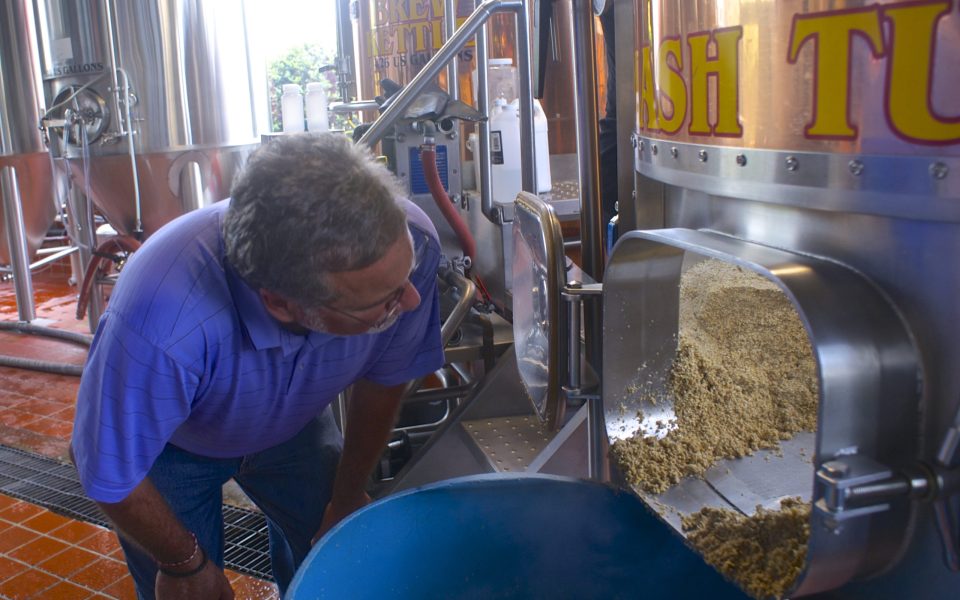by Eric Ginsburg
Without a background in brewing, it’s difficult to understand everything Mark Sammartino and Todd Isbell are talking about. And some of the finer points still appear to be lost on one of Isbell’s students from the brewing program at Rockingham Community College, who is listening intently but with his face slightly screwed up over the details.
Occasionally Isbell, the head brewer at Liberty Steakhouse & Brewing in High Point, will stop what he’s doing and ask a technical question, which his student answers correctly about half the time.

But almost all the questions come from Sammartino, as Isbell verbalizes the steps to a manual mash out. He wants to know how what exactly Isbell is adding and at what time in the process, and they compare notes on what happens to the spent grains after it’s all over.
The two men met years ago, during Isbell’s early days in the beer world back in New York, and when they crossed paths recently at Mystery Brewing in Hillsborough, neither recognized the other. As they compared notes on how each entered the industry, Isbell realized they probably knew someone in common.
“Do you know Mark Sammartino?” he asked.
“I am Mark Sammartino,” Isbell’s old acquaintance replied.
Sammartino, who now lives on the North Carolina coast, spent more than 30 years with Anheuser-Busch, including 28 years as a brewmaster. He is now a brewing consultant and more recently became the technical director of the Master Brewers Association of the Americas.
After reconnecting with Isbell, who bounced around before settling at Liberty, Sammartino wanted to come to the brewery to check out the process and conduct an experiment — the contents of which are proprietary. On a recent Thursday, just after wrapping up and shortly before noon, he doesn’t want to even hint at the specifics.
Instead he sits on top of a stack of Briess malt and ingredients bags pushed up against a wall of Isbell’s brewing space, then standing and walking a couple paces to look inside the mash tun. There’s a thin layer of “top dough,” about two inches, covering the spent grain Isbell was using to make the brewery’s two wheat beers. Reaching his arm into the open tub-like container, Sammartino sticks his finger into the grain and tastes it. The mixture looks like oatmeal that is somewhat disintegrated and compacted, and the taste isn’t too far off either.
After Sammartino steps back, Isbell shovels the grain out into a plastic blue barrel, standing above the open mash tun with a shovel that could be used to clean snow from a driveway. A local farmer will come by and pick up the two loads, feeding the spent grains to his cattle. Isbell offers his excess for free; at Sammartino’s old gig, the remnants were sold, he says.
As the two men discuss additives, equipment, temperatures and other minutia of the trade, the differences between mega breweries and their micro counterparts such as Liberty become increasingly clear. But there’s no judgment or jealousy in their voices, just genuine curiosity about a parallel universe.
Join the First Amendment Society, a membership that goes directly to funding TCB‘s newsroom.
We believe that reporting can save the world.
The TCB First Amendment Society recognizes the vital role of a free, unfettered press with a bundling of local experiences designed to build community, and unique engagements with our newsroom that will help you understand, and shape, local journalism’s critical role in uplifting the people in our cities.
All revenue goes directly into the newsroom as reporters’ salaries and freelance commissions.





Leave a Reply